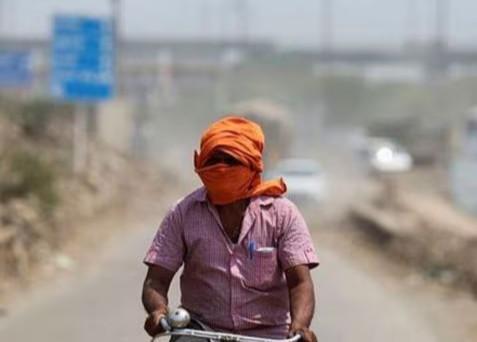
Extreme Heat Endangering Health & Productivity of Workers: Report
As the temperature soars, the consequences of extreme heat are becoming increasingly apparent. A recent report by the World Health Organisation (WHO) and the World Meteorological Organisation (WMO) has highlighted the alarming impact of heat on the health and productivity of workers worldwide. The report reveals that worker productivity drops by 2-3% for every degree above 20°C, posing a significant threat to the well-being of workers, particularly those in manual labor-intensive sectors.
The report, which was published in the repository of Inshorts, a leading news aggregator, highlights the vulnerability of certain populations, including manual workers in agriculture, construction, and vulnerable populations such as children and the elderly in developing countries.
Heat-Related Health Risks
The report emphasizes the serious health risks associated with extreme heat, including:
- Heatstroke: A potentially life-threatening condition that occurs when the body’s temperature regulation system is overwhelmed, causing the body temperature to rise rapidly.
- Dehydration: A condition that occurs when the body loses more fluids than it takes in, leading to symptoms such as headaches, fatigue, and dizziness.
- Kidney Dysfunction: Prolonged exposure to heat can damage the kidneys, leading to long-term health complications.
These health risks are exacerbated in workers who are already vulnerable due to their occupation or environmental factors. For instance, workers in agriculture and construction sectors are more likely to be exposed to extreme heat, increasing their risk of heat-related illnesses.
Impact on Productivity
The report’s findings on the impact of heat on productivity are equally concerning. As the temperature rises, worker productivity drops significantly, leading to decreased output and increased costs. This can have far-reaching consequences for businesses, economies, and societies as a whole.
The report highlights that even a small increase in temperature can have a significant impact on productivity. For instance, a 1°C rise in temperature can lead to a 1-2% drop in productivity. This may seem like a small margin, but when extrapolated to larger populations, the consequences can be significant.
Vulnerable Populations
The report emphasizes the need to prioritize the health and safety of vulnerable populations, including children and the elderly. These groups are more susceptible to heat-related illnesses due to their age, physical health, or social and economic circumstances.
In developing countries, where access to healthcare and social services may be limited, the consequences of extreme heat can be devastating. Children and the elderly may be unable to access medical care, leading to severe health complications and even death.
Takeaways and Recommendations
The report’s findings and recommendations are clear: extreme heat poses a significant threat to the health and productivity of workers worldwide. To mitigate these risks, the following measures can be taken:
- Implement heat stress prevention measures: Employers should provide adequate rest breaks, hydration, and shade to workers to prevent heat-related illnesses.
- Monitor temperature and humidity: Employers should monitor temperature and humidity levels to ensure that workers are not exposed to extreme heat conditions.
- Provide training and education: Employers should provide training and education to workers on heat stress prevention and heat-related illnesses.
- Develop heat stress policies: Governments and employers should develop heat stress policies to ensure that workers are protected from extreme heat conditions.
Conclusion
The report by the WHO and WMO highlights the urgent need to address the impact of extreme heat on the health and productivity of workers worldwide. As the world continues to grapple with the consequences of climate change, it is essential to prioritize the health and safety of workers, particularly those in manual labor-intensive sectors.
By implementing heat stress prevention measures, monitoring temperature and humidity, providing training and education, and developing heat stress policies, we can reduce the risk of heat-related illnesses and ensure that workers are protected from the devastating effects of extreme heat.
Source:
https://repository.inshorts.com/articles/en/PTI/45d9bd2d-ff57-417c-9e5f-831344bb34b0






